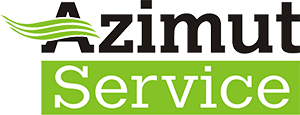Association Contractors
Association contractors are individuals or companies that specialize in providing services to associations, such as homeowner associations, condominium associations, and community associations. These contractors or service providers are often hired to help manage the day-to-day operations of the association, from maintenance and repairs to financial management and administrative support.
Association contractors offer a wide range of services, and the specific services provided can vary depending on the type of association. Some common services provided by association contractors include:
1. Property Management: Association contractors are often hired to handle property management responsibilities, including maintenance and repairs, landscaping, and security. They may also be responsible for scheduling and coordinating vendor services, such as snow and ice removal or trash collection.
2. Financial Management: Association contractors may also provide financial management services to associations, including budgeting, accounting, and financial reporting. They may also be responsible for managing the association`s bank accounts, paying bills, and collecting assessments from residents.
3. Administrative Support: Association contractors may provide administrative support to the association, such as answering phones, responding to emails and letters, and maintaining association records.
4. Legal Support: Association contractors may also provide legal support to the association, including reviewing contracts and agreements, representing the association in legal disputes, and ensuring compliance with state and federal laws and regulations.
Association contractors play a vital role in the overall management and success of an association. By hiring an experienced and reputable association contractor, associations can ensure that their day-to-day operations run smoothly and efficiently. Additionally, association contractors can provide valuable expertise and guidance to association boards, helping them make informed decisions and navigate complex legal and financial issues.
When selecting an association contractor, it is important to look for a company or individual with a track record of success and experience in working with similar associations. Additionally, it is important to ensure that the contractor has the necessary licenses and insurance to perform the desired services.
In conclusion, association contractors provide a wide range of services that are essential to the management and success of associations. By hiring an experienced and reputable contractor, associations can ensure that their operations run smoothly, their finances are handled correctly, and their residents are well taken care of. If you are considering hiring an association contractor, it is important to do your research and choose a provider that is best suited to your association`s needs.
